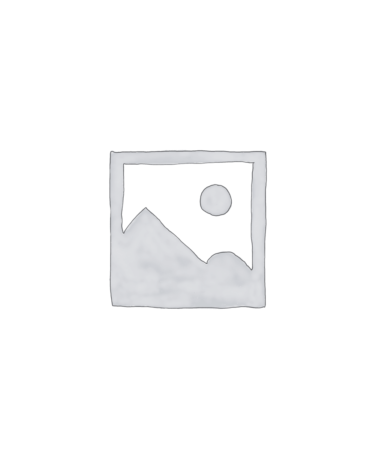Surveys are no longer considered only a ‘Marketing gimmick’.” Everyone, nowadays, wants to understand human behavior, which necessitates the creation of effective surveys to aid in the process.
However, there is a significant difference between “generic” and “expert” surveys, with the primary distinction being the use of “Open-Ended” or “Closed-Ended” questions.
So, let’s get started on understanding what this implies and when you should use open-ended and closed-ended questions in a well-planned and executed survey.
What’s the difference between open-ended and closed-ended questions?
The distinction between open-ended and closed-ended questions is that close-ended questions offer a set of options from which the responder must choose, whereas open-ended questions allow respondents to respond anyway they like. Let’s take a closer look at each of these types of inquiries to get a better understanding of them.
What do you mean by open-ended questions?
Open-ended questions are those that don’t have a simple “yes” or “no” answer and instead require the respondent to elaborate on their arguments.
Open-ended inquiries allow you to see things from the customer’s point of view because you obtain input in their own words rather than canned responses. Spreadsheets can be used to evaluate open-ended questions, view qualitative patterns, and even find aspects that stand out using word cloud visualizations.
What do you mean by closed-ended questions?
Closed-ended questions are those that can only be replied by choosing from a limited set of possibilities, such as multiple-choice questions with a single-word response, such as “yes” or “no,” or rating scales (e.g., from strongly agree to strongly disagree).
Closed-ended questions provide minimal information, but they are simple to evaluate for quantitative data. The Net Promoter Score (NPS) question, for example, is a typical closed question in marketing that asks individuals “How likely are you to recommend this product/service on a scale of 0 to 10?” and calculates total score trends using numerical replies.
When should you use open-ended and closed-ended questions?
Whether you work in marketing, product development, sales, or user-centric quantitative research, asking the appropriate questions during customer interviews or on-site surveys will help you collect feedback to improve user experiences and, ultimately, increase conversions and sales.
As a general rule, the type of question you select is determined by your objectives.
-When you want answers that may be plotted on a graph and used to show trends and percentages, ask a closed-ended question. For example, responses to the closed-ended question “Do you trust the content on [website]?” can help you figure out how many individuals regard your website trustworthy versus how many do not.
-Ask an open-ended inquiry when you want to learn more about your consumers and their demands, gain a deeper understanding of their activities, and/or analyze the reasons for their happiness or discontent with your product. The open-ended question “If you could change anything on this page, what would it be?” for example, allow your consumers to convey what they think you should work on next in their own words.
A few of the most common and favorite open-ended customer queries:
In terms of what to ask, the five open-ended questions below are excellent for ecommerce sites (or any website that can benefit from user-based quantitative research and insight) if you’re just getting started:
- What can we do to improve this page?
Short and to the point, asking a user how a website might be improved opens the door to a plethora of responses you may not have considered.
- How did you hear about us?
An open “How did you hear about us?” question allows users to respond freely rather than being forced into a canned response, and provides you with valuable data that would be difficult to track with typical analytics methods.
- What’s keeping you from taking action today?
On exit pages, ask “what is stopping you?” The open-form responses will help you uncover the conversion hurdles that prevent consumers from taking action.
- What are your primary issues or inquiries regarding ?
-
$16.00
-
Customers’ complaints and objections on your website can be addressed in future editions of the page(s) they’re on if you learn about them. It may appear straightforward, but you’ll be amazed by how open and helpful your users are when answering this question.
- What made you decide to [act] today?
You may find your triggers by learning what prompted a buyer to click ‘purchase now’ or ‘sign up.’ Whatever it is that pulls them in and convinces them to remain, figuring out what it is that draws them in and convinces them to stay will allow you to stress these benefits to other users and, eventually, increase conversions.
When to Use Open-Ended and Closed-Ended Questions
Open-ended inquiries are commonly used in (but not limited to) the following situations:
1. Personality-based quantitative research, customer feedback, and screening questionnaires that could be for a variety of issues like understanding online grocery shopping patterns, preference for product X as opposed to Y, to name a few.
2. Interviews with experts
Because open-ended type of surveys requires critical thinking, experts in a given field are naturally regarded “qualified” respondents to participate in such surveys and produce useful responses.
Let’s say the goal of a survey is to better understand the science behind nutrition. An open-ended survey aimed at qualified dietitians should be established to encourage them to show off their knowledge and submit in-depth, relevant responses.
3. One-on-one usability testing or small field studies
In smaller research investigations, the primary goal is to acquire rich, insightful answers rather than statistical analysis. When the target demographic is small and can be interviewed in greater depth, this is conceivable.
This allows individuals to deliver more wide, open-ended responses, similar to those received from open-ended type of survey. A teacher, for example, might conduct a survey in class to learn how to make his or her lessons more engaging.
Closed-ended questions are effective in the following situations:
1. Mass surveys
Because this type of survey is usually brief and time-consuming, there is a better likelihood of getting a higher response rate. The most crucial thing here is to extract statistical data. For instance, calculating population growth in a city over a period of time or capturing leads during trade events.
2. Demographic and quantitative user research
The replies seek to reduce error rates by extracting information about certain factors like age, gender, marital status, income, and so on.
3. Conducting initial research
It’s helpful in the early stages of a study when the goal is to learn more about the target audience. Open-ended type of surveys can be used as a supplementary stage if the goal is to get answers to “Why”-type questions based on the data collected in closed-ended type of surveys.
Summary of Key Differences: Open-ended vs Closed-ended questions
- In terms of response to surveys
- Open-ended questions let people express their opinions, in their own words.
- Closed-ended questions allow for limited responses, such as ‘yes’ or ‘no’.
- In terms of Information gathered from surveys
- Closed-ended questions provide quantitative information on respondents (e.g., NPS survey).
- Answers to open-ended questions can help you identify with people and their experiences with your product, website etc.
- By asking for more detail, you can change a closed-ended question into an open-ended one.












